Latest blogs

Created by - Vinod Verma
What is BDS?
BDS stands for Bachelor of Dental Surgery. In India BDS degree is awarded at the successful completion of four years of study and one year of internship to the students as per the old regulations of Dental council of India. According to new regulations, the BDS course comprises of five years with no internship period. Post graduate courses (Master of Dental Surgery. MDS) are also available in different specialties. It requires 3 years of study after BDS.Dentistry is the branch of medicine that is involved in the study, diagnosis, prevention, and treatment of diseases, disorders and conditions of the oral cavity, the maxillofacial area and the adjacent and associated structures, and their impact on the human body. While pursuing the course, one learns about different aspects of Dental Science, which includes various forms of treatment including surgical procedures. Dental materials, Dental anatomy & Oral histology, Oral Pathology, Community Dentistry, Endodontics, Oral Medicine & Radiology are some of the topics that are generally taught.After pursuing BDS course, one can work as dentist in government or private hospitals or open up his/her own clinic, to serve the society.
More detailsPublished - Thu, 20 Oct 2022
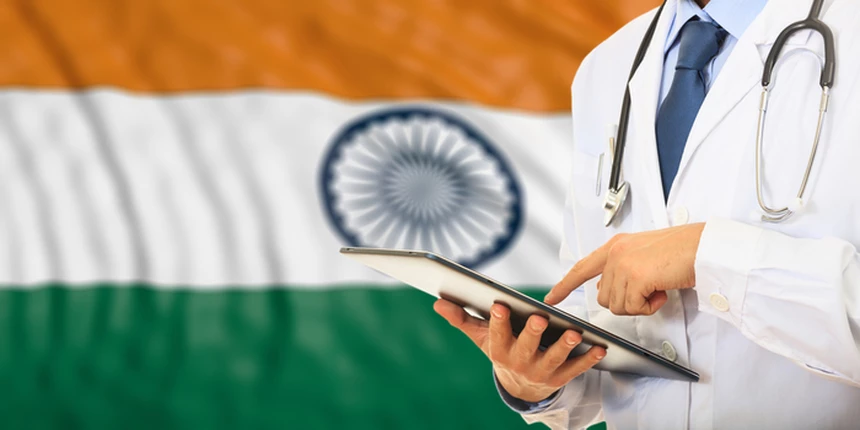
Created by - Vinod Verma
MBBS an Option for Medical Students
MBBS stands for Bachelor of Medicine and Bachelor of Surgery. The naming suggests that they are two separate degrees; however, in practice, they are usually treated as one and awarded together. Professionals holding MBBS degrees are referred to by the courtesy title of "Doctor" and use the prefix "Dr". The degrees are the British equivalent of the American M.D. Medicinae Baccalaureus, Baccalaureus Chirurgical (abbreviated in various ways, viz. MBBS or MBChB, MB BS, MB BChir, BM BCh, MB BCh, MB ChB, BM BS, BM, BMed etc.), are the two first professional degrees awarded upon graduation from medical school in medicine and surgery by universities in United Kingdom and other places following the British tradition, such as Australia, Hong Kong, Malaysia, Singapore, New Zealand, South Africa, Pakistan, Sri Lanka and India.The basic or degree level qualification for a medical profession is MBBS (Bachelor of Medicine And Bachelor of Surgery) which is of 5 1/2 years duration (including 1 year internship). Selection for MBBS is through an All India Entrance Examination. The qualification required for entrance is 10+2 or equivalent with Science subjects. In the case of private medical colleges entrance examinations are conducted by the institutes individually. Every student shall undergo a period of over 4 1/2 academic years divided into 9 semesters, followed by one year compulsory rotating internship. Medical education in India is regulated by Medical Council of India.In India Medical education is offered at four levels:1.First degree - Bachelor of Medicine and Bachelor of Surgery (MBBS)2.Postgraduate diplomas in specific areas such as Child Health (DCH), Laryngology and Otology (DLO), Diploma in Gynecology and Obstetrics (DGO) and postgraduate degree in broad specialties – Doctor of Medicine (MD), Master of Surgery (MS)3.Postgraduate degree (Super Specialties) - Doctor of Medicine (DM), and Master of Chirurgiae (MCh) also known as post-doctoral degrees4.Research degree M.Phil and PhD.
More detailsPublished - Thu, 20 Oct 2022
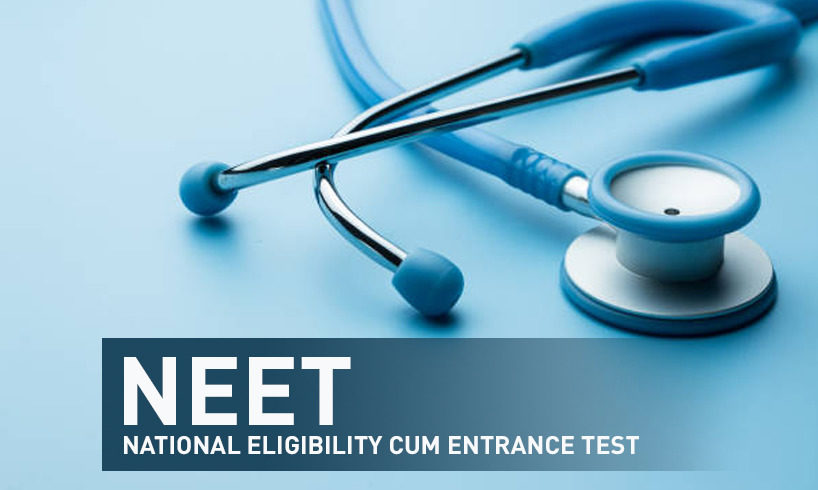
Created by - Vinod Verma
About NEET
The National Testing Agency (NTA) conducts the National Eligibility cum Entrance Test (NEET) exam in 13 languages. The single national-level undergraduate medical entrance exam, NEET UG held every year for admission to 645 medical, 318 dental, 914 AYUSH, and 47 BVSc and AH colleges in India.The NTA will commence the NEET UG 2023 registration at neet.nta.nic.in. As per the previous year's date, over 18.72 lakh candidates registered for NEET UG, out of which over 10.64 lakh were women and 8.07 lakh were men. It is important to fill correct details in the NEET 2023 to avoid trouble later in the admission process. The NEET application form 2023 will be considered successfully submitted only after the submission of the fee, which is different for each category. The correction window for registered aspirants will be opened for a specific period of time for candidates to make changes in their application forms, Candidates whose application forms will be accepted by the NTA will be issued hall tickets. The NEET 2023 admit card can be downloaded with a user ID, password/date of birth and security pin. Each student is required to carry a hard copy of the NEET 2023 admit card and other relevant documents on the exam day. aspirants without a hard copy of the NEET UG 2023 hall tickets and other mandatory documents will not be given entry inside the examination hall under any circumstances. NEET will be conducted in pen and paper-based mode for admission to 97293 MBBS, 27868 BDS, 52,720 AYUSH, 603 BVSc, and AH seats. As per NEET 2023 exam pattern, the exam will contain 200 questions, out of which, aspirants need to answer only 180. NTA NEET 2023 question paper will include questions from Physics, Chemistry, and Biology. In NEET 2023 exam, 4 marks will be awarded for every correct answer, one mark will be deducted for every wrong answer and no marks will be given for any unanswered question. The NEET 2023 provisional answer key along with the question paper and OMR sheet will be released by the NTA a few days after the exam. Candidates will be able to challenge the NEET 2023 provisional answer key and OMR sheet by paying Rs 200 for every challenge answer. It must be noted that the fee paid by the aspirants will be non-refundable even if the challenge is accepted by the NTA. Based on the challenges submitted by the students, the NEET 2023 final answer key will be released along with the result. NEET 2023 result will be announced in the form of a scorecard at neet.nta.nic.in mentioning the All India Rank (AIR), total and subject-wise marks obtained personal details. The scorecard of the candidates will also mention the NEET 2023 cutoff for every category. Based on NEET scores 2023, counselling for admission to 15% All India Quota (AIQ), 85% state quota, deemed/central universities, private colleges, AFMS/ESIC institutes, AIIMS and JIPMER campuses will be conducted. The Medical Counselling Committee (MCC) will conduct the counselling for 15 % All India Quota admissions, while the for the rest 85% state quota, the respective state authorities will conduct the counselling on their websites. How to contact NTA?Address: Block C-20 1A/8, Sector-62, IITK Outreach Centre, Gautam Buddh Nagar, Noida - 201309, Uttar Pradesh (India)Contact number: 0120 6895200Website: nta.ac.in or neet.nta.nic.inEligibility Criteria for NEET 2023NationalityIndian Nationals, NRIs, PIOs, OCIs and Foreign NationalsNEET 2023 Age LimitLower limit:17 years plus as on December 31, 2023 Upper age Limit: NoneQualifying exam details required for NEETClass 12 or equivalent with PCB. Class 12 percentage required for NEET 2023Gen/ OBC: Minimum 50% in PCB and aggregate SC/ST: Minimum 40% PwD: 45%NEET attempt limitNo limitClass 12 BoardStudents from recognized boards including NIOS and open schoolsBiology as an extra subjectAllowed NEET 2023 - Eligibility Criteria for MBBS/ BDS/ BUMS/ BSMS coursesCourseClass 12 percentage required for NEETMBBS/ BDSMinimum 50% in class 12 (40% for SC/ST and 45% for PWD).BUMSIn addition to the above, pass in Urdu or Arabic or Persian language in class 10.BSMSPass in Tamil subject in class 10 or equivalent in addition to class 12 criteria given above.NEET 2023 HighlightsFull Exam NameNational Eligibility cum Entrance TestShort Exam NameNEETConducting BodyNational Testing AgencyFrequency of ConductOnce a yearExam LevelNational Level ExamLanguagesAssamese, Bengali +11 MoreMode of ApplicationOnlineApplication Fee (General)1600 Rs [Online]Mode of ExamOfflineMode of CounsellingOnline / OfflineParticipating Colleges942Exam Duration3 Hours 20 MinutesNumber of Seats178484 Seats
More detailsPublished - Thu, 20 Oct 2022
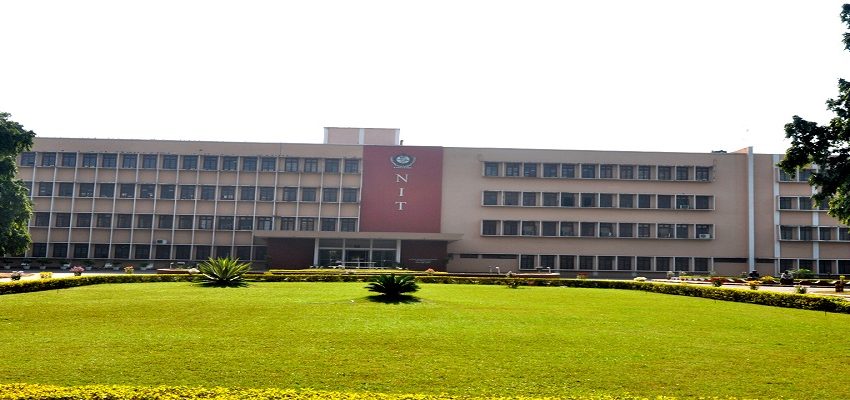
Created by - Vinod Verma
NIT : NOT LESS THAN IIT's
The National Institutes of Technology (NITs): are a group of higher education engineering institutes in India. Comprising thirty autonomous institutes, they are located in one each major state/territory of India. On their inception decades ago, all NITs were referred to as Regional Engineering Colleges (RECs) and were governed by their respective state governments. A parliamentary legislation in 2002 brought them under the direct purview of India's federal government. In 2007, through legislation, the Indian government declared these schools as Institutes of National Importance at par with the Indian Institutes of Technology. NITs were found to promote regional diversity and multi-cultural understanding in India. Therefore, in the NIT school system, 50% of the student population in each batch is drawn from the respective state of the NIT and the other 50% is drawn from the rest of India on a common merit list. This is different than the Indian Institutes of Technology or IITs - another prominent engineering school system in India. An IIT need not accept specified number of students from any region of India as the IIT admission criteria is based only on the performance of a student in an entrance examination. NITs offer degree courses at bachelors, masters, and doctorate levels in various branches of engineering and technology. Various nationwide college surveys rate most of the NITs over other colleges in India, except for the IITs and a few other institutions. NITs function autonomously, similarly to IITs, sharing only entrance tests. The autonomy enables the NITs to set up their own curriculum, thereby making it easier to adapt to changing industry requirements. The admissions to the Undergraduate Programmes at these institutions for all Indian and Foreign nationals are made through the Joint Entrance Examination (JEE) Main.List of NITs in India Among all the 31 NITs in India, NIT Patna, established in 1886, is the oldest while NIT Goa, NIT Manipur, NIT Meghalaya, NIT Mizoram, NIT Nagaland, NIT Puducherry, NIT Sikkim, NIT Uttarakhand, NIT Andhra Pradesh are recently formed institutions. MHRD has assigned ranking to almost all the NIT. NIT Calicut had the highest seat intake for BTech programmes with 909 seats while NIT Goa, Manipur, and Mizoram contains the lowest seats at 150.NIT Trichy (NITT), 1964 NIT Karnataka (NITK), 1960 NIT Rourkela (NITRKL), 1961 NIT Warangal (NITW), 1959 NIT Calicut (NITC), 1961 NIT Nagpur (VNIT), 1960 NIT Durgapur (NITDGP), 1960 NIT Silchar (NITS), 1967 NIT Jaipur (MNIT), 1963 NIT Allahabad (MNNIT), 1961 NIT Kurukshetra (NITKKR), 1963 NIT Jalandhar (NITJ), 1987 NIT Surat (SVNIT), 1961 NIT Meghalaya (NITM), 2010 NIT Patna (NITP), 1886 NIT Raipur (NITRR), 1956 NIT Srinagar (NITSRI), 1960 NIT Bhopal (MANIT), 1960 NIT Agartala (NITA), 1965 NIT Goa (NITG), 2010 NIT Jamshedpur (NITJSR), 1960 NIT Manipur (NITMN), 2010 NIT Hamirpur (NITH), 1986 NIT Uttarakhand (NITUK), 2010 NIT Puducherry (NITPY), 2010 NIT Arunachal Pradesh (NITAP), 2010 NIT Sikkim (NITSKM), 2010 NIT Delhi (NITD), 2010 NIT Mizoram (NITMZ), 2010 NIT Nagaland (NITN), 2010 NIT Andhra Pradesh (NITANP), 2015 NIT Trichy (NITT), 1964NIT Karnataka (NITK), 1960NIT Rourkela (NITRKL), 1961NIT Warangal (NITW), 1959NIT Calicut (NITC), 1961NIT Nagpur (VNIT), 1960NIT Jaipur (MNIT), 1963NIT Kurukshetra (NITKKR), 1963NIT Silchar (NITS), 1967NIT Durgapur (NITDGP), 1960NIT Allahabad (MNNIT), 1961NIT Jalandhar (NITJ), 1987NIT Surat (SVNIT), 1961NIT Meghalaya (NITM), 2010NIT Bhopal (MANIT), 1960NIT Raipur (NITRR), 1956NIT Agartala (NITA), 1965NIT Goa (NITG), 2010NIT Jamshedpur (NITJSR), 1960NIT Patna (NITP), 1886NIT Hamirpur (NITH), 1986NIT Puducherry (NITPY), 2010NIT Manipur (NITMN), 2010NIT Arunachal Pradesh (NITAP), 2010NIT Srinagar (NITSRI), 1960NIT Delhi (NITD), 2010NIT Mizoram (NITMZ), 2010NIT Nagaland (NITN), 2010NIT Sikkim (NITSKM), 2010NIT Uttarakhand (NITUK), 2010NIT Andhra Pradesh (NITANP), 2015
More detailsPublished - Thu, 20 Oct 2022

Created by - Vinod Verma
IIT a Dream of Non Medical Student
The Indian Institutes of Technology (popularly known as the IITs) are institutions of national importance established through an Act of Parliament for fostering excellence in education. There are fifteen IITs at present, located in Bhubaneswar, Bombay (Mumbai), Delhi, Gandhinagar, Guwahati, Hyderabad, Indore, Kanpur, Kharagpur, Madras (Chennai), Mandi, Patna, Ropar, Jodhpur and Roorkee. Over the years IITs have created world class educational platforms dynamically sustained through internationally recognized research based on excellent infrastructural facilities. The faculty and alumni of IITs continue making a huge impact in all sectors of society, both in India and abroad. Banaras Hindu University (IT-BHU, now known as IIT-BHU since 2012), Varanasi and Indian School of Mines (ISM), Dhanbad, are amongst the oldest institutions in India and are known for their immense contributions towards society at large and for science and technology in particular.The primary objectives behind such institutions are to: Build a solid foundation of scientific and technical knowledge and thus to prepare competent and motivated engineers and scientists.Create environment for freedom of thought, cultivate vision, encourage growth, develop personality and self- discipline for pursuit of excellence.Kindle entrepreneurial streak.All of the above help to prepare the students admitted to these institutions for successful professional and social lives. Today, alumni of these institutions occupy key positions in industry and academia in India and abroad.Each institute has well-equipped modern laboratories, state-of-the-art computer network and well stocked technical library. Teaching methods rely on direct personal contact between the teachers and the students and the use of traditional and modern instructional techniques. Students live in a pleasant and intellectually stimulating environment with people having similar goals and aspirations, which is an exciting and unique experience.Credit-based academic programmes offer flexibility to students to progress at their own pace. A minimum level of performance is necessary for satisfactory progress. The medium of instruction is English. These institutions offer courses leading to Bachelor's degree in a number of engineering, technological and scientific disciplines. M.Sc. Integrated courses in pure and applied sciences and M.Tech. Integrated courses in a few disciplines are also offered by some of these Institutions. In addition, some IITs offer Dual-Degree M.Tech. programmes. The admissions to the Undergraduate Programmes at these institutions for all Indian and Foreign nationals are made through the Joint Entrance Examination (JEE).IIT Bhuvaneshwar, IIT Gandhinagar, IIT Hyderabad, IIT Rajasthan, IIT Patna, IIT Punjab joined the elite list of the below seven premier technology institutions of the country and started operations in the year 2008. IIT Indore, IIT Mandi commenced their operations from the academic year 2009-2010.IIT Kharagpur IIT Kharagpur: The first Indian Institute of Technology was born in May 1950 in Hijli, Kharagpur, in the eastern part of India. The present name, Indian Institute of technology was adopted before the formal inauguration of the institute on August 18, 1951, by Maulana Abul Kalam Azad. The layout of the present campus is 2100 acres and the design of the building was carried out by a host of engineers and architects under the guidance of an eminent Swiss architect Dr. Werner M.Mosir. (https://www.iitkgp.ac.in/) IIT Bombay IIT Bombay: Since 1958, there has been dynamic progress at IIT Bombay in all academic and research activities, and a parallel improvement in facilities and infrastructure, to keep it at par with the best institutions in the world. IIT Bombay is a small township in itself. Consciously developed, the campus has retained and increased its green cover, rich natural flora and fauna.(https://www.iitb.ac.in/) IIT Kanpur IIT Kanpur: IIT Kanpur is one of the premier institutions established by the Government of India. The aim of the Institute is to provide meaningful education, to conduct original research of the highest standard and to provide leadership in technological innovation for the industrial growth of the country. With the path-breaking innovations both in its curriculum and research, the institute is rapidly gaining a legendary reputation. In addition to offering formal Undergraduate and Post-Graduate programmes, the institute has been involved in Continuing Education and Research & Development in the areas of value to both the industry and the Government. (https://www.iitk.ac.in/) IIT Madras IIT Madras: Established in the year 1959, it was the third in the line of Indian Institute of Technology setup for higher technical education in the country. The IITMadras, is among the foremost institutes of national importance in higher technological education and in basic and applied research. Institute’s self-contained campus is located in beautiful, wooded land of about 250 hectares in south Chennai. (https://www.iitm.ac.in/) IIT Delhi IIT Delhi: IIT Delhi is one of the seven institutes of technology created as centers of excellence for higher training, research and development in science, engineering and technology in India. Established as College of Engineering in 1961, the institute was later renamed “Indian Institute of Technology Delhi”. It was then accorded the status of a deemed university with powers to decide its own academic policy, to conduct its own examinations and to award its own degrees.(https://www.iitd.ac.in/) IIT Guwahati IIT Guwahati: Indian Institute of Technology Guwahati, the 6th member of the IIT fraternity, was established in 1994. The academic programme of IIT Guwahati commenced in 1995. IIT Guwahati's campus is on a sprawling 285 hectares plot of land on the north bank of the river Brahmaputra around 20 kms. from the heart of the city. With the majestic Brahmaputra on one side, and with hills and vast open spaces on others, the campus provides an ideal setting for learning. (https://www.iitg.ac.in/) IIT Roorkee IIT Roorkee: The institute which began as the Thompson College of Civil Engineering in 1847, became the University of Roorkee in 1949 and has been declared as the 7th Indian Institute of Technology in 2001. IIT Roorkee is spread over a sprawling area of more than 150 hectares and is situated in the newly formed state of Uttaranchal in the northern part of India. (https://www.iitr.ac.in/) IIT-BHUIIT-BHU: IT-BHU is the Engineering School of Banaras Hindu University (BHU). BHU is one of the oldest and largest educational institutions in Northern India. It was formerly known as BENCO (Banaras Engineering College) and celebrated its Platinum Jubilee in 1994. It is located on the banks of the river Ganga in the holy city of Varanasi (Banaras), Uttar Pradesh. (https://www.iitbhu.ac.in/) IIT DhanbadIIT Dhanbad: The Indian School of Mines was formally opened on 9th December 1926. the development of ISM for the last 75 years has been taking place both vertically and horizontally and it became a Deemed University in 1967. (www.ismdhannbad.ac.in)
More detailsPublished - Thu, 20 Oct 2022
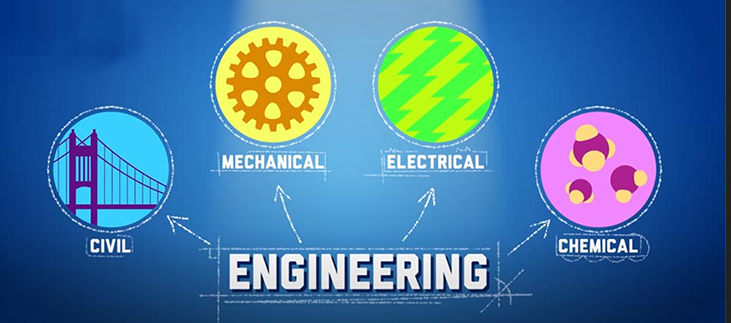
Created by - Vinod Verma
Engineering Specializations for a Student
1. Acoustic EngineeringAcoustic or Sound Engineering teaches students how to design sound-proof buildings and rooms, and develop techniques, and sound-absorbing materials to reduce noise. Correspondingly, it plays a key role in enhancing the sound quality for public platforms, such as auditoriums and halls. Acoustic Engineers work with construction companies involved in building large halls, buildings and public address systems; theatres and producers of large music systems or speakers. At a time when the real estate industry is experiencing an unprecedented boom, this discipline offers great opportunities. 2. Aeronautical / Aerospace / Astronautical EngineeringAn Aeronautical engineer is involved in developing various technologies related to aircrafts, spaceships and missiles. Aeronautics and astronautics are among the most popular of engineering disciplines. Most students wish to work with NASA after pursuing this branch of Engineering. One can join a space research organization or, can become an Astronaut. Some students may go on to work with airplane or missile manufacturing companies. Originally called aeronautical engineering and dealing solely with aircraft, the broader term "aerospace engineering" has replaced the former in most usage, as flight technology has become more advanced and includes craft operating outside the Earth's atmosphere. In analogy with "aeronautical engineering", the branch is sometimes referred to as astronautical engineering, although this term usually only concerns craft which operate in outer space. 3. Agriculture EngineeringA student, after getting this degree, can work in designing agricultural equipment, which may lead to control of soil erosion. Agricultural engineers work in irrigation and land conservation projects; and efficient processing, transporting and storing of agricultural products for maximum freshness and minimum losses; and also to reduce any kind of human effort involved in these chores. 4. Automobiles engineeringStudents of this branch of engineering study about developing various technologies related to automobiles and other vehicles as well as their design and production. With the growing automobile industry, this branch of engineering provides lucrative job opportunities and excellent compensation for fresh engineering graduates as well as experienced professionals. 5. Biochemical EngineeringBiochemical engineering is a branch of chemical engineering that mainly deals with the design and construction of unit processes that involve biological organisms or molecules. Biochemical engineering is often taught as a supplementary option to chemical engineering due to the similarities in both the background subject curriculum and problem-solving techniques used by both professions. Its applications are used in the pharmaceutical, biotechnology, and water treatment industries 6. Biomedical EngineeringBiomedical engineering (BME) is the application of engineering principles and techniques to the medical field. It combines the design and problem solving expertise of engineering with the medical expertise of physicians to help improve patient health care and the quality of life of healthy individuals. As a relatively new discipline, much of the work in biomedical engineering consists of research and development, covering an array of fields: bioinformatics, medical imaging, image processing, physiological signal processing, biomechanics, biomaterials and bioengineering, systems analysis, 3-D modeling, etc. Examples of concrete applications of biomedical engineering are the development and manufacture of biocompatible prostheses, medical devices, diagnostic devices and imaging equipment such as MRIs and EEGs, and pharmaceutical drugs. 7. Chemical EngineeringChemical engineering is the branch of engineering that deals with the application of physical science (e.g. chemistry and physics), with mathematics, to the process of converting raw materials or chemicals into more useful or valuable forms. As well as producing useful materials, chemical engineering is also concerned with pioneering valuable new materials and techniques; an important form of research and development. A person employed in this field is called a chemical engineer. Chemical engineering largely involves barfing and reproducing. Chemical engineers in this branch are usually employed under the title of process engineer. The development of the large-scale processes characteristic of industrialized economies is a feat of chemical engineering, not chemistry. Indeed, chemical engineers are responsible for the availability of the modern high-quality materials that are essential for running an industrial economy. 8. Civil engineeringCivil engineering -- one of the oldest branches of engineering and the first to develop scientific principles -- deals mainly with construction. Their applications can be found in construction of buildings, bridges, roads, highways, flyovers and all kinds of structures for airports, railways and many other constructions. The real estate, infrastructure, and construction industry is growing at a very fast pace in India. These industries serve as excellent career options for civil engineers and architects. The salaries of civil engineers and architects have been growing exponentially in the last few years. 9. Computers engineering/ Software engineering/ Information Technology In Computer Science and Software Engineering branches, both the hardware and software of computers is taught. This branch of engineering deals with all aspects of Information technology, like applications of artificial intelligence, robotics and computations used in modern industrial scenario. Software involves learning programming languages and operating systems, which may be used to develop application programs for man-machine interface. Computer engineering (also called electronic and computer engineering) is a discipline that combines elements of both electrical engineering and computer science. Computer engineers are electrical engineers that have additional training in the areas of software design and hardware-software integration. In turn, they focus less on power electronics and physics. Computer engineers are involved in many aspects of computing, from the design of individual microprocessors, personal computers, and supercomputers, to circuit design. This engineering discipline is especially useful for integrating embedded systems into devices and machines (for example, several embedded computer systems are used to control and monitor the many subsystems in motor vehicles). Usual tasks involving computer engineers include writing software and firmware for embedded microcontrollers, designing VLSI chips, designing analog sensors, designing mixed signal circuit boards, and designing operating systems. Computer engineers are also suited for robotics research, which relies heavily on using digital systems to control and monitor electrical systems like motors, communications, and sensors. Information technology (IT) is the study, design, development, implementation, support or management of computer-based information systems, particularly software applications and computer hardware. In short, IT deals with the use of electronic computers and computer software to convert, store, protect, process, transmit and retrieve information. Software engineering is the application of a systematic, disciplined, quantifiable approach to the development, operation, and maintenance of software. The discipline of software engineering encompasses knowledge, tools, and methods for defining software requirements, and performing software design, software construction, software testing, and software maintenance tasks. Software engineering also draws on knowledge from fields such as computer engineering, computer science, management, mathematics, project management, quality management, software ergonomics, and systems engineering. 10. Electronics engineering/ Electronics and Tele-CommunicationElectronics engineering essentially deals with the production of all kinds of electronic equipment, computers, medical and scientific electronic instruments and consumer durables. An electronics and communications engineer specializes in telecommunication equipment and processes. There is a high demand for electronics and communications engineers so as to meet the growing requirements of the telecom software development industry, telecom equipment manufacturers and service providers. New research and development in the wireless telecom standards has led to the creation of new opportunities for high-end research and development work.11. Electrical engineeringElectrical engineering is involved in developing, producing and testing of electrical and electronic machines, such as generators and motors. They also deal with power production and distribution systems. In India, telecom software industry has been hiring electrical engineers in great numbers. 12. Environment engineeringThis branch of engineering deals with prevention and control of toxic pollution like air, water, soil and noise. They also build environment friendly industrial processes. Environment engineers are trained in technologies related to public health, public works, waste management, and environmental protection and remediation. 13. Geomatic EngineeringIt is a rapidly developing discipline that focuses on spatial information. The location is the primary factor used to integrate a very wide range of data for viewing and analysis. Geomatics engineers apply engineering principles to spatial information and implement relational data structures involving measurement sciences, thus using geomatics and acting as spatial information engineers. Geomatics engineers manage local, regional, national and global spatial data infrastructures. Geomatics Engineering also involves aspects of Computer Engineering and Civil Engineering. 14. Mechatronics EngineeringMechatronics is the synergistic combination of mechanical engineering ("mecha" for mechanisms, i.e., machines that 'move'), electronic engineering ("tronics" for electronics), and software engineering. The purpose of this interdisciplinary engineering field is the study of automata from an engineering perspective and serves the purposes of controlling advanced hybrid systems. 15. Instrumentation engineering Instrumentation Engineering is concerned with measurement and control of processes in industry. For example, an instrumentation engineer may be involved with production or design or maintenance of flow measuring equipment. 16. Mechanical engineeringA mechanical engineer studies about production transmission and the use of mechanical power and designing, operating and testing of various types of machines. Mechanical engineering finds applications in all fields of technology. These engineers are required in various industries, such as automobile, chemical, electronics, steel plants, oil exploration and refining, technical wings of armed forces, and space research organization. 17. Nuclear engineeringNuclear Engineering, as a field of study revolves around the technological application of nuclear energy for the production of energy and related equipment. 18. Systems engineering Systems engineering is geared towards the design and development of large and complex systems, such as the intercontinental ballistic missiles system. It uses results of systems theories and shares techniques with operations research and is akin to software engineering, which also tackles designing complex systems. 19. Polymer engineering This branch of engineering is concerned with production of Polymers, their processes and applications. 20. Petroleum engineeringThis branch of engineering deals in the production, storage and transportation of petroleum and natural gas. 21. Industrial/ Production engineering Both Industrial and Production Engineering apply engineering analysis and techniques to the production of goods and techniques, more particularly, mathematical models to simulate flow of work through the organization and to evaluate the effects of any proposed changes.22. Metallurgical engineeringMetallurgical engineering is concerned with the study of structure, properties, production and use of various materials – metallic and non-metallic. It deals with refining ores to a pure state (extractive metallurgy) and converting refined materials into useful finished products (physical metallurgy) 23. Marine engineering/ Naval architecture Marine Engineering is related to the production and maintenance of marine machinery and equipment which are used in commercial ships and naval bases. Naval Architecture deals with the design and construction of ships as well as other vehicles. 24. Mining engineeringMining Engineering as a field of study, is the integrated application of multiple scientific and engineering disciplines related to the extraction of natural materials from the earth’s crust.25. Ocean engineering Ocean Engineering deals with the design and installation of all kinds of equipment used in large water bodies. 26. Textile engineeringTextile Engineering is concerned with machinery and processes used to produce both natural and synthetic fibers and textiles.
More detailsPublished - Thu, 20 Oct 2022
Popular blogs
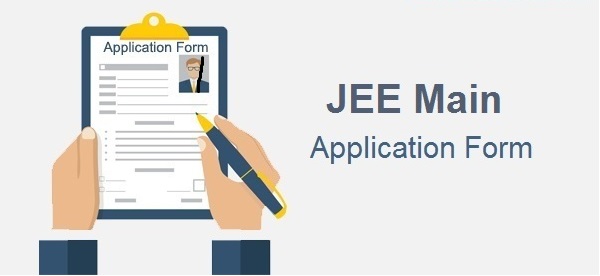
Created by - Vinod Verma
Everything About JEE
has been decided to hold a Joint Entrance Examination (JEE) from the year 2017 for admission to the undergraduate programmes in Engineering in two parts, JEE-MAIN and JEE-ADVANCED. Only the top 200000 candidates based on performance in JEE MAIN will qualify to appear in the JEE ADVANCED examination. Admissions to IITs will be based only on category-wise All India Rank (AIR) in JEE ADVANCED, subject to condition that such candidates are in the top 20 percentile (category wise) in their respective Boards/Qualifying Examinations. Admission to NITs will be based on 40 % weightage for performance in Class XII board/ equivalent examination marks (normalized) and the remainder 60 % weightage would be given to performance in JEE Main and a combined All India Rank (AIR) would be decided accordingly. The policy could also be adopted by other Centrally Funded Technical Institutions (CFTIs) and participating Institutions. In case any State opts to admit students in the engineering Colleges affiliated to state Universities and requires separate merit list to be provided based on relative weightages adopted by the states, the merit list shall be prepared with such relative weightages as may be indicated by States. For such participating states the examination will be conducted in the Regional Languages of the State(s) on request. The erstwhile AIEEE exam will now be called as JEE-MAIN exam and erstwhile IIT-JEE will now be called as JEE-ADVANCED exam. To appear in JEE-ADVANCED, one has to appear in JEE-MAIN first and should be in top 2 lacs candidates category wise.Only the top 200000 candidates (including all categories) based on performance in JEE MAIN will qualify to appear in the JEE ADVANCED examination. Admissions to IITs will be based only on category-wise All India Rank (AIR) in JEE ADVANCED, subject to condition that such candidates are in the top 20 percentile (category wise) in their respective Boards/Qualifying Examinations.Admission to NITs will be based on 40 % weightage for total marks obtained in Class XII board/ equivalent exam (normalized) and 60 % weightage to performance in JEE Main. A combined All India Rank (AIR) would be decided accordingly. The policy could also be adopted by other Centrally Funded Technical Institutions (CFTIs) and participating Institutions. In case any State opts to admit students in the engineering Colleges affiliated to state Universities and requires separate merit list to be provided based on relative weightages adopted by the states, the merit list shall be prepared with such relative weightages as may be indicated by States. As of now Gujarat state has opted for the same. Hindi and English. The JEE-MAIN examination will also be conducted in the Regional Languages of the State(s) on the requests of such State(s) who are participating in JEE(Main) for their State Engineering Colleges/ Universities. However JEE-ADVANCED will be conducted in English/Hindi medium only. The minimum academic qualification for appearing in JEE(MAIN) 2017 is that a candidate must have passed in the final examination of 10+2 (Class XII) or its equivalent referred to as the qualifying examination. Those appearing in 10+2 (Class XII) final or equivalent examination in 2017 may also appear in JEE(MAIN) 2017 provisionally. List of qualifying examinations for JEE Main is:I. The +2 level examination in the 10+2 pattern of examination of any recognized Central/State Board of Secondary Examination, such as Central Board of Secondary Education, New Delhi, and Council for Indian School Certificate Examination, New Delhi.II. Intermediate or two-year Pre-University Examination conducted by a recognized Board/University. III. Final Examination of the two-year course of the Joint Services Wing of the National Defence Academy. IV. Any Public School/Board/University Examination in India or in foreign countries recognized by the Association of Indian Universities as equivalent to 10+2 system.V. H.S.C. Vocational Examination.VI. A pass grade in the Senior Secondary School Examination conducted by the National Open School with a minimum of five subjects.VII. 3 or 4-year diploma recognized by AICTE or a State Board of Technical Education. IMPROVE YOUR PERFORMANCEIf you want to improve your performance in Board’s Exam, you can do so but for consideration of that year’s result you have to appear in all the subjects (as per the scheme of studies of your Board, 5 subjects in case of CBSE ) and not partially. You can not improve in one/two subjects and add them to previous years’ performance. Negative marking in JEE-MainYES. There will be objective type questions with four options having single correct answer. For each incorrect response, one fourth (1/4) of the total marks allotted to the question would be deducted. No deduction from the total score will, however, be made if no response is indicated for an item in the answer sheet. NO OF ATTEMPTSThe number of attempts which a candidate can avail at JEE(Main) shall be limited to 03 (three) uniformly for all the candidates in consecutive years. The candidates passed +2 exam in 2015 or 2016 or appearing in +2 in 2017 are only eligible to appear in JEE(Main)-2017. Candidates passed +2 in 2014 or before or appearing in 2014 are not eligible to appear in JEE(Main)-2017. AGE LIMITOnly those candidates whose date of birth falls on or after October 01, 1992 are eligible. However, in the case of Scheduled Caste (SC), Scheduled Tribe (ST) and Persons with Disabilities (PWD) candidates, upper age limit is relaxed by 5 years, i.e. SC, ST and PWD candidates who were born on or after October 01, 1987 are eligible. Date of birth as recorded in the Secondary Education Board/University certificate only will be taken as authentic. RESERVATIONAs per Government of India rules candidates belonging to certain categories are admitted to seats reserved for them based on relaxed criteria. These categories are: I. Other Backward Classes (OBC) if they belong to Non-Creamy Layer (NCL)II. Scheduled Castes (SC)III. Scheduled Tribes (ST)IV. Persons with Physical Disability (PD)Benefit of reservation shall be given only to those classes/castes/tribes which are in the respective central list published by the Govt of India.
More detailsPublished - Thu, 20 Oct 2022

Created by - Vinod Verma
ENGLISH WRITING
This is Test Blog
More detailsPublished - Tue, 05 Jul 2022
Search
Popular categories
Tracing letters Aa to Zz Worksheets | Trace Alphabet Letter Aa-Zz Printable Worksheets
26Lowercase Alphabet Letter a - z Tracing Printable Worksheets
26Engineering
5MEDICAL
3IELTS
1Latest blogs

What is BDS?
Thu, 20 Oct 2022
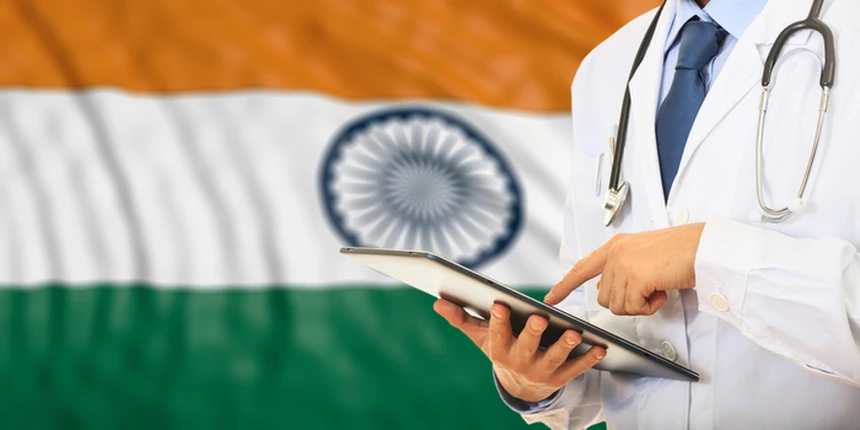
MBBS an Option for Medical Students
Thu, 20 Oct 2022
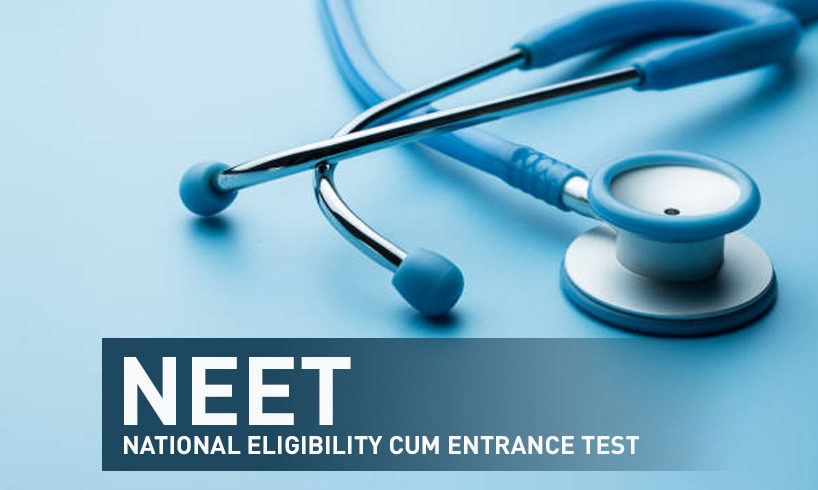
About NEET
Thu, 20 Oct 2022
Write a public review